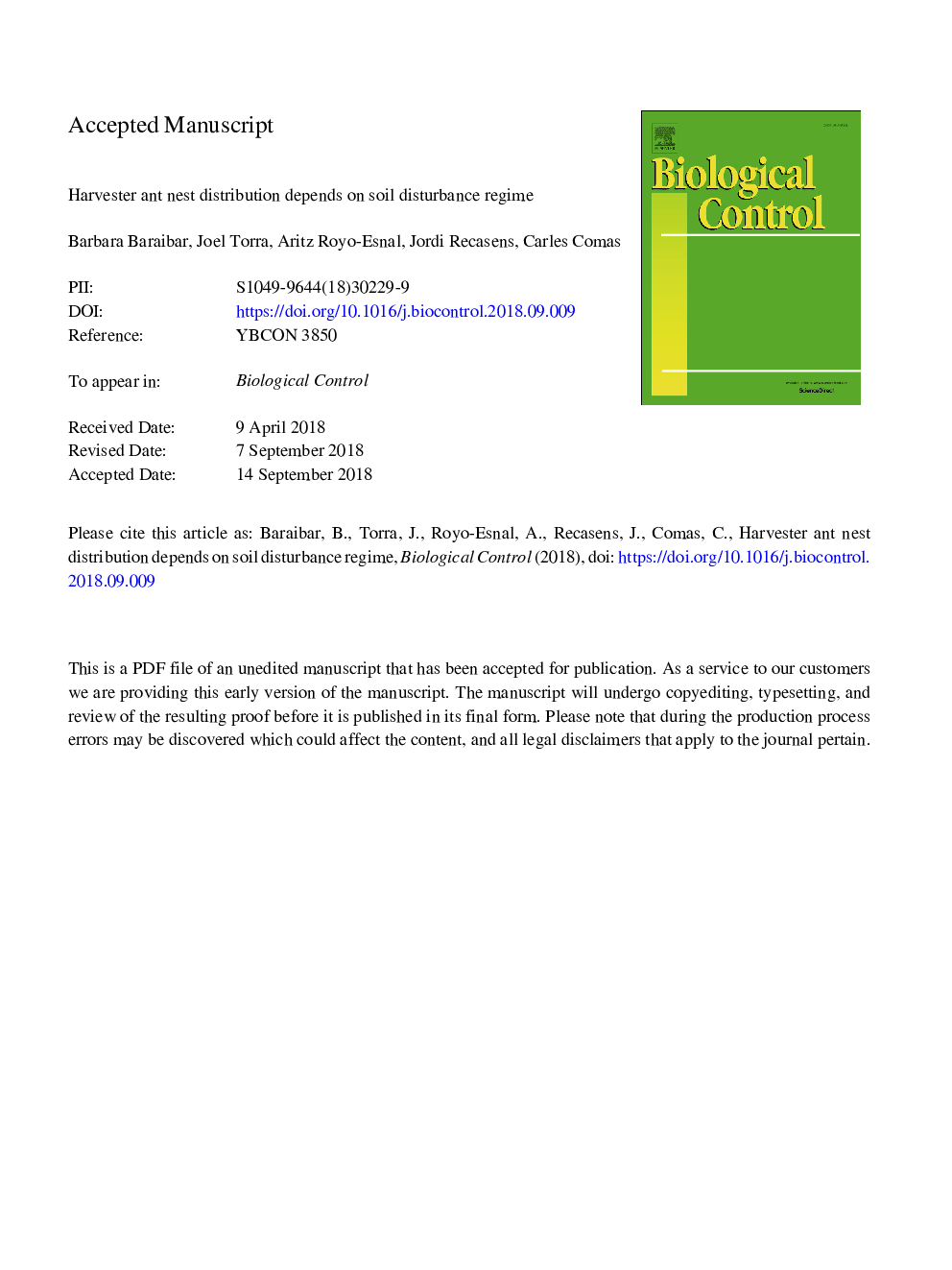| Article ID | Journal | Published Year | Pages | File Type |
|---|---|---|---|---|
| 10223737 | Biological Control | 2019 | 20 Pages |
Abstract
Nest densities of harvester ants (Messor barbarus) are high in rain-fed cereal fields in north-eastern Spain where the ants remove large quantities of seeds, contributing to reductions in weed populations. The distribution of harvester ant nests within a field can influence the effectiveness of ants as weed seed predators because areas with low ant nest density have lower weed seed removal rates. Tillage can disturb or even kill ant colonies and may be an important factor explaining the distribution of nests within fields. During the summers of 2011-2013, the number of nests in a 50â¯Ãâ¯50â¯m area in 4 tilled and 3 no-till fields were counted. Tilled fields were disturbed twice a year, in November before cereal seeding and in July, after cereal harvest, whereas no-till fields had no soil disturbance. Ant nests were evenly spaced in no-till fields whereas nests were randomly distributed in tilled fields. Our results provide evidence that no-till in cereal fields promotes a more even distribution of M. barbarus nests, which should result in higher and more regular levels of weed seed predation across the field.
Related Topics
Life Sciences
Agricultural and Biological Sciences
Agronomy and Crop Science
Authors
Barbara Baraibar, Joel Torra, Aritz Royo-Esnal, Jordi Recasens, Carles Comas,
